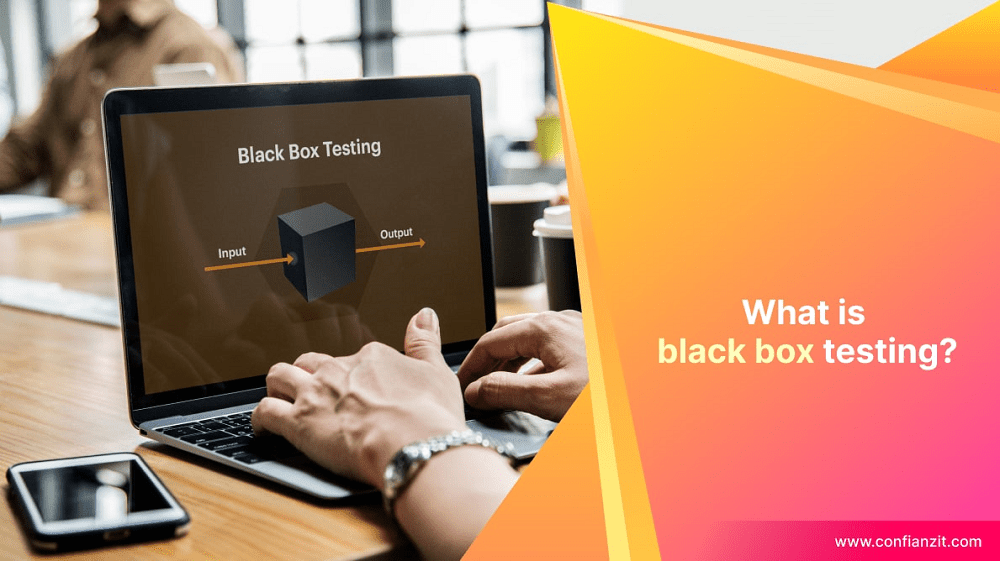The best way to reduce bugs is through testing. Testing is an essential part of programming. It is the process of executing a program or system to find errors or defects. In addition, the testing aims to identify any problems that may have been introduced during development and verify that the program performs as intended.
Unfortunately, it is a fact of life that users will break your product in ways you wouldn’t think were possible. You and your team may have run your software through every test in the book. But you will inevitably be inundated with bug reports on launch day.
Black box testing is a way to combat the unexpected and reduce the number of bugs and errors that show up during your launch. Read on to learn more about black box testing and why it’s necessary.
What is Black Box Testing?
Black box testing is a type of quality assurance testing that examines the functionality of an application with no knowledge of its internal workings.
The term “black box” comes from the analogy of a black box in engineering, which refers to an opaque container from which signals are input and output, but whose internal state is unknown.
This means the tester does not know the internal logic and structure of the product being tested. They are unaware of what functions or code modules exist within the program, how they interact, or what they are supposed to do. They don’t know how data is transferred or processed within the program.
The tester is only aware of what is accessible from the “outside” of the program. Again, this mimics how the average user will interact with your product.
Types of black box testing
While there is a long list of potential black box tests, the two most common types are functional test and regression tests. These are both used to test web pages, applications, and other software products.
- Functional testing: This type of black box testing focuses on determining if the system is functioning as expected. The tester tests the application by following a set of predetermined steps to determine if it responds as expected and if there are any errors.
- Non-functional testing: This type of black box testing focuses on determining if the system meets its non-functional requirements, such as performance, scalability, availability, etc. The tester will use tools such as load testers and network monitors to simulate different loads that users or clients might experience.
- First, the tester does not need to know anything about the code, architecture, or design.
- It is easy to set up and execute.
- It is less time-consuming than other forms of testing.
- The test results are easy to interpret, as they show what actually happens when a user runs the software.
- Keep the testing environment as similar as possible to the production environment.
- Make sure the tester only knows what they are testing and what they are supposed to do.
- Ensure that you have an efficient way of monitoring the results of your tests.
- Ensure that you have an efficient way of communicating the results of your tests.
- Monitor and record errors, exceptions, and other system output for your bug-tracking system or application log.
- If possible, have a test group that uses a different account or testing service account to help identify issues related to the tests themselves.
- Look at the project’s code and make sure you are familiar with it so that you can use the debugging information when needed.
- Ensure that your test team is aware of any changes in the production environment.
Black Box Testing vs. White Box Testing
The opposite of black box testing is white box testing. So, what’s the difference?
Black box testing examines the functionality of a system or application from the perspective of an end user.
White box testing is the opposite; it examines the application’s internal structure, such as code and data flow.
White box testing is done by testers who have access to the code and design of the system under test. They can analyze it and exploit it for bugs and errors. On the other hand, black box testers do not have access to any information about how the system works internally, only what is visible from the outside.
What Are the Benefits of Black Box Testing?
Black box testing can seem like a waste of time. Tests where the user knows what’s going on under the hood can get you informed results faster. This is because they know exactly what can break the code and how to stress test it. In comparison, the black box tester can take longer to find bugs and won’t find more specific ones since they know nothing about the code or code in general.
However, black-box testing is essential because it’s the closest thing you can have to simulate an actual user. They will use your software in ways that you might have yet to predict. It’s also a two-for-one test since they will show you issues with your user experience and find bugs at the same time.
These are some of the other benefits of black box testing:
What Are the Best Practices for a Successful Black Box Test?
The best practices for a successful black box test are:
Conclusion
Buggy software is a nightmare for you and your users. That’s why you need to run a whole gamut of testing before sending your product out into the world. Black box testing is one of the easiest ways to track how a potential user interacts with your program and what things they might do that can break it.
If you want your program to have the best chance for success, reach out to us! Confianz is here to partner with you and ensure your product is polished and market ready. Confianz Global Inc. is an established Software development company and a leading provider of end to end IT services in the United States. We provide custom development solutions across Software Development, Mobile App Development, Odoo ERP customization & Implementation and Responsive Web Design & Development Services.
So call us to get started!







